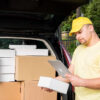Family trips are a treasure trove of memories, filled with moments worth preserving and sharing. Creating a personalized travelogue is a meaningful way to document these experiences, combining both old and new memories into one cohesive narrative. By gathering family photos, incorporating stories, and adding personal touches, you can craft a unique keepsake that will be cherished for years to come. Here’s how to get started.
Collecting and Organizing Old Family Photos
The first step in creating your travelogue is to gather all the photos from your family trips. Start by digging through old albums, photo boxes, and even shoeboxes stuffed with printed pictures, negatives, or slides. Often, these older formats hold irreplaceable memories that have been tucked away for years.
Consider converting these older media formats into digital files to enhance and preserve them. For instance, 35mm slides were once popular, and you can transfer 35mm slides to digital to breathe new life into those long-forgotten images. Using a reliable photo scanning service can help with this process, particularly for printed photos and negatives. These services can provide high-quality digital copies of your precious images, ensuring they are ready to be included in your travelogue without losing their original charm.
Choosing the Right Format
Once your photos are organized and digitized, decide on the format for your travelogue. You could go for a traditional printed photo book or opt for a digital format, such as an e-book or a multimedia slideshow. Think about how you want your travelogue to be viewed and shared with family members and future generations. A printed book offers a tactile experience, while a digital version can be shared easily online and updated over time.
Editing and Arranging Your Travelogue
Now comes the creative part—editing and arranging your photos and stories. Start by grouping photos by location, year, or significant events from your trips. You might want to include captions that describe the places you visited or the emotions you felt at the time. Feel free to edit the photos to enhance their quality or create a specific mood, but try to maintain the integrity of the original images, especially if they hold sentimental value.
Incorporating Personal Anecdotes and Family Stories
A travelogue is more than just a photo album. What makes it special are the personal stories behind each image. Take the time to write about your family’s adventures, funny moments, and even the challenges you faced during your travels. These anecdotes will add depth and personality to your travelogue, making it a true reflection of your family’s unique journey.
Sharing and Preserving Your Travelogue
Once your travelogue is complete, share it with your family and loved ones. You can create multiple copies, whether physical or digital so that everyone can enjoy the memories. If you’ve created a digital version, consider backing it up in multiple places to ensure it’s preserved for the future.
By scanning and digitizing old family photos and slides, you’re also ensuring that these memories are safeguarded for the long term. Regularly updating your travelogue with new trips or stories will keep it fresh and relevant as your family continues to explore new places together.
Conclusion
Creating a personalized travelogue from family trips is a fulfilling project that allows you to relive treasured memories and share them with others. By organizing old photos, choosing the right format, and incorporating personal stories, you can craft a meaningful keepsake that can be cherished for generations. Taking the time to preserve and arrange these moments ensures that your family’s adventures will be remembered and celebrated for years to come.










